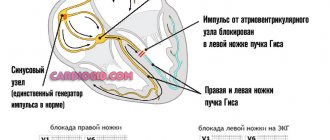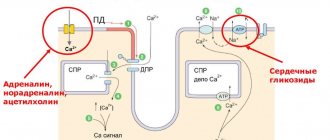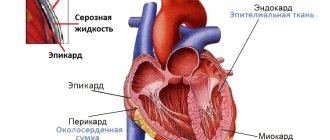A spinal block is an injection that is used to reduce inflammation or “turn off” the pain signal traveling along a specific nerve. Often during a spinal block, specialists will use imaging techniques (usually fluoroscopy or computed tomography (CT)) to help position the needle correctly for maximum effect. A spinal block provides temporary pain relief and helps identify the nerve that is responsible for the pain.
There is no need to prepare in advance for a spinal block. If you are expecting a child, be sure to tell your doctor about it. Dress in loose, comfortable clothing and leave your jewelry at home. Before the procedure, you may be asked to change into a hospital gown.
When is a nerve block performed?
Nerve blocks may be indicated for people who suffer from acute or chronic pain. As a rule, the source of such pain is the spine. The block is also used for pain in the neck, buttock, leg or arm. Injecting the drug gives the nerve time to heal, reduces inflammation and relieves pain. In addition, the nerve block provides the doctor with additional diagnostic information. This procedure allows the doctor to determine whether the target nerve is the source of the patient's pain or whether the cause lies elsewhere.
What does the equipment used for a spinal block look like?
The doctor will insert a small needle under your skin and then guide it to the injection site. A small amount of contrast material may be used during a spinal block. The injection itself is carried out using a syringe. The doctor will open the ampoule with the medicine and fill the syringe. The type of medication depends on the individual needs of the patient.
If in your case the spinal block involves the use of a fluoroscope or tomograph, then additional equipment will be placed around the couch. Both fluoroscopy and computed tomography are completely painless.
The equipment typically needed for a spinal block includes an x-ray table, one or two x-ray tubes, and a monitor located in the doctor's office. Fluoroscopy, which converts X-ray images into film, is used to guide the doctor during the procedure. The film is recorded using an X-ray machine and a sensor suspended above the table on which the patient lies.
A CT scanner is usually a large, box-like machine with a hole or shallow tunnel in the center. You will be placed on a narrow examination table that extends into a tunnel. An X-ray tube and X-ray sensors are located inside the device. The workstation that processes visual information is located in a separate room where a technician operates the scanner and monitors the procedure. Typically, the control room is equipped with a loudspeaker or microphone to maintain communication with the patient.
Complications
Improper implementation of the blockade can easily provoke serious complications. To avoid such consequences, contact only qualified specialists. The doctor should send you for an extensive diagnostic examination, which will help rule out the presence of contraindications. Quite often, a spinal block causes bleeding. There is also a possibility of infection joining the treated cavity.
If the medicine is administered incorrectly, a person may experience soft tissue damage. If patients are intolerant to the drug, they develop an allergic reaction, which is extremely dangerous for a weakened body. If performed correctly, a spinal block will show extremely positive results. With its help, it will be possible to get rid of painful sensations, as well as establish metabolic processes.
How does a spinal block work?
During the block, the doctor will inject an anesthetic or anti-inflammatory substance as close to the damaged nerve as possible. The medicine will block pain receptors in the problem nerve. CT or fluorography can help the doctor choose the optimal injection site. The imaging tests themselves are completely painless.
Typically, the injection begins to work immediately. Pain relief occurs very quickly. However, a spinal block is a temporary measure. The effect of the injection lasts 1-2 weeks. Some patients do several blocks to achieve long-term effect. For others, blockades do not help at all. If you are unable to achieve the desired result with a spinal block, try other treatment methods.
Read also…. Scoliosis of the thoracic spine
Types of blockades
Today, there are several types of spinal blockade. All of them can relieve a person from painful sensations. There are several types of such blockades.
Today, there are the following methods of administering spinal blocks:
- Paravertebral – performed near the spinal column. The drug is injected as close as possible to the roots, into the human muscle tissue;
- Epidural - an anesthetic medicine is injected into the area between individual vertebrae, as well as into the dura mater of the spinal cord;
- Conductive - injections are made into nerve fibers. This is the fastest method for blocking painful sensations.
Experts also identify several goals of such procedures:
- Therapeutic – allows you to relieve pain;
- Diagnostic – allow you to conduct research for osteochondrosis;
- Prophylactic – prescribed to prevent complications during surgical treatment of the spine.
Local blockades are used in the vast majority of cases. The essence of their effect is the effect on nerve fibers - the drugs allow you to slow down the conduction of impulses, due to which a person gets rid of painful sensations.
The following local anesthetics are distinguished:
- Novocaine is a drug that is most often used for blockades. The product is available in the form of injections. The drug begins to act a few minutes after administration. The effect of the procedure lasts for several hours. This helps stop the pulsation and significantly improves the patient’s well-being.
- Lidocaine is a pain reliever that is used quite often. It has a faster onset of action, the effect of administration lasts for several hours.
- Marcaine is a local anesthetic that begins to act only 10-15 minutes after administration of the drug. On average, the duration of the therapeutic effect lasts for 3-5 hours. The drug may have a negative effect on the functioning of the cardiovascular system.
Corticosteroids are another group of spinal blockades that allow you to quickly get rid of the inflammatory process. In addition, the medicine helps get rid of swelling and stops attacks of an allergic reaction.
This medicine is extremely rarely used for self-administration; usually they are injected in their pure form only into the joints.
However, they can be diluted with other anesthetics for a more targeted effect. The most popular corticosteroids for spinal blockade are:
- Hydrocortisone is a suspension that must be dissolved in novocaine. The medicine helps relieve nervous tension;
- Dexamethasone is a drug that begins to act immediately after administration. The medicine has a short-term effect;
- Depo-Medrol is a long-acting drug that helps relieve pain in joints and soft tissues. The drug is used with extreme caution to treat inflammatory processes in the spinal cord;
- Diprospan is a long-term drug that allows you to get rid of diseases of the spine and joints. It can be used for soft tissue blocks;
- Kenalog is a corticosteroid used for spinal and joint blockades.
There are other medications used to relieve pain in the spine. Before starting treatment with these drugs, you should always consult your doctor. Only an experienced specialist will tell you which drug is best for you to use.
What sensations can you experience during the procedure?
You will probably feel a prick when the needle is inserted under the skin. Once the injection is given, your discomfort should decrease. Sometimes, in order to get to the nerve that is causing the problem, the doctor must insert the needle quite deeply. This may cause temporary discomfort, but try not to jerk so that the doctor can calmly guide the needle to the desired location.
If the injection site is close to a large nerve (such as the sciatic nerve) or bundle of nerves, your doctor will ask you to speak if you suddenly feel sharp pain. A twinge of pain means the needle is too close to a large nerve and needs to be repositioned. This happens extremely rarely, so there is no need to worry.
You will likely feel significant relief immediately after the injection. The effect of a spinal block usually lasts 1-2 weeks, but in some cases it can be permanent or last no more than 12 hours. In some cases there may be no effect at all.
The injection is usually performed by a neurologist or anesthesiologist. The same doctor will monitor your condition after the spinal block. All images taken during the procedure are interpreted during the process.
Sinoatrial (sinoauricular) blockade
Sinoatrial block occurs when the node, which is located at the level of the right atrium appendage, is affected. As a result of such changes in the normal rhythm of the heart, complete cycles of myocardial contraction are lost. The intervals between successive contractions can exceed normal values by 2 times. This phenomenon occurs constantly or periodically, and therefore diagnosis by ECG can be difficult.
Sinoauricular block is more common in women over 50 years of age. Pathologies that can cause it include:
- increased tone of the vagus (vagus nerve);
- blows to the solar plexus or strong pressure on the eyeballs;
- taking certain groups of medications, including cardiac glycosides and quinidine.
SA blockade on the ECG is visible as long pauses between myocardial contractions, that is, an increase in the diastole period. There are 1st and 2nd degree blockades, as well as complete conduction disturbance. At the first stage, the disease is asymptomatic. In grade 2, the patient is concerned about interruptions in the functioning of the heart muscle and disturbances in the functioning of the vestibular apparatus. With a complete blockade, there is a risk of sudden fainting and even death.
An ECG can show not only cardiac conduction disturbances, but also determine the type of blockade
The disadvantages and risks of a spinal block include:
- infection at the injection site;
- bleeding;
- unintentional introduction of a drug into a blood vessel;
- injection into another, “healthy” nerve and, as a result, lack of effect;
- damage to the nerve located close to the target one when trying to administer the drug;
- Spinal blockade, which is performed using fluoroscopy and computed tomography, involves receiving a small dose of radiation.
Women who suspect they are pregnant should definitely tell their doctor or technician. Many research tests are not recommended during pregnancy to prevent radiation from harming the baby. If x-rays are necessary, you will need to take all precautions to minimize the risk.
Read also…. Spinal sclerosis
It is worth mentioning separately that clinics in Russia now use hormonal drugs for spinal blockade. Often the patient is not informed about this. The administration of hormones can have serious complications for patients, for example, the development of diabetes mellitus and cataracts.
If you are being treated in our Clinic and are going to undergo a blockade with hormones, then you need to inform your doctor, since after the administration of hormones, obtaining the effect of treatment using our method is significantly more difficult (hormones worsen reparative processes.
Atrioventricular blocks
Atrioventricular (AV) block is a violation of the conduction of electrical impulses between the atria and ventricles. It is also called atrioventricular. It can be partial or complete, permanent or occur spontaneously. The most reliable way to diagnose it is daily Holter monitoring. With this procedure, sensors are attached to the patient’s chest for a day. During this period, physical activity is contraindicated, but moderate activity is permitted. Thus, it is possible to track the work of the heart depending on the time of day and intensity of exercise.
1st degree
First degree atrioventricular block is represented by a slowdown in the propagation of the impulse from the atria to the ventricles. If normally this time ranges from 0.15 to 0.18 seconds, then with a first-degree blockade it increases to 0.2 seconds. An increase in the PQ interval is visualized on the ECG.
1st degree AV block can be chronic or accompany the acute course of certain diseases. Thus, it manifests itself during the period of exacerbation of rheumatism and disappears after stabilization of the patient’s condition. However, in a number of diseases it is constantly diagnosed. These include:
- cardiosclerosis, which occurs after acute myocarditis;
- atherosclerosis of the coronary arteries that supply the myocardium (especially the right artery);
- syphilis, which occurs with damage to the myocardium;
- septic phenomena.
At the initial stage, the pathology is asymptomatic. It is more often detected on a routine ECG or during the diagnosis of the underlying disease.
2nd degree
Atrioventricular block of the 2nd degree occurs when conduction between the atria and ventricles deteriorates, compared to the 1st stage. The ECG shows loss of individual ventricular contractions. This phenomenon appears every 3rd, 4th or 5th contraction and is called the Samoilov-Wenkerbach periods.
Another sign of second-degree AV block can be detected during the initial examination, without an ECG. During auscultation (listening) of the heart, you must simultaneously keep your hand on the pulse. This way you can identify the loss of individual contractions.
3rd degree
3rd degree AV block is called complete. In this case, the conduction of electrical impulses between the atria and ventricles becomes impossible. This condition threatens the patient's life as the changes may be irreversible. Complete AV block is rarely detected - it can be detected in less than 1% of all ECGs performed.
What are the limitations of a spinal block?
As a rule, the analgesic and anti-inflammatory effects achieved with a therapeutic injection disappear over time, and the pain returns in the same amount. However, we should not forget that each person’s reaction is individual. Often blocking injections are given in a course and then stopped. The duration of the course depends on the result. Some patients feel relief after a course of blockades, while for others the injections do not help at all, even though the drug is injected into the correct place. If a spinal block does not help you, your doctor will likely recommend other types of treatment. The number of injections depends on your medical history. The procedure can be repeated 3 to 6 times within 12 months. If you suffer from other health problems, such as diabetes, then injections are best avoided.
We believe that performing spinal blocks with hormonal drugs for spinal osteochondrosis is not advisable, since they do not affect the disease in any way and can lead to serious complications for the patient. In some cases, kinesiotaping, hirudotherapy and non-stress traction of the spine provide a much more pronounced analgesic effect, do not lead to complications and treat osteochondrosis, affecting different parts of its pathogenesis. The most effective treatment for osteochondrosis and its complications (disc herniation, protrusion, spondylosis, spondyloarthrosis) is complex non-drug treatment of the spine.
Indications and symptoms for spinal blockade
Blocking pain in the spine - what is it? A blockade is the shutdown of nerve conduction of fibers that are susceptible to pain for a certain period.
The main indication for its implementation is pain syndrome, which is a companion to diseases such as:
- joint diseases;
- osteochondrosis of different parts of the spine;
- intercostal neuralgia;
- soreness of the head, face;
- hernias in the intervertebral space;
- myositis;
- peripheral nerve pinching.
The main signs for carrying out a blockade are recognized:
- pain syndrome that interferes with movement;
- pain in the spinal region of an acute nature and radiating to the limbs;
- high risk of disability due to disease progression.
To get rid of pain, one injection is enough, in some cases a whole course is prescribed. It must be remembered that such treatment is recommended no more than four times a year.











